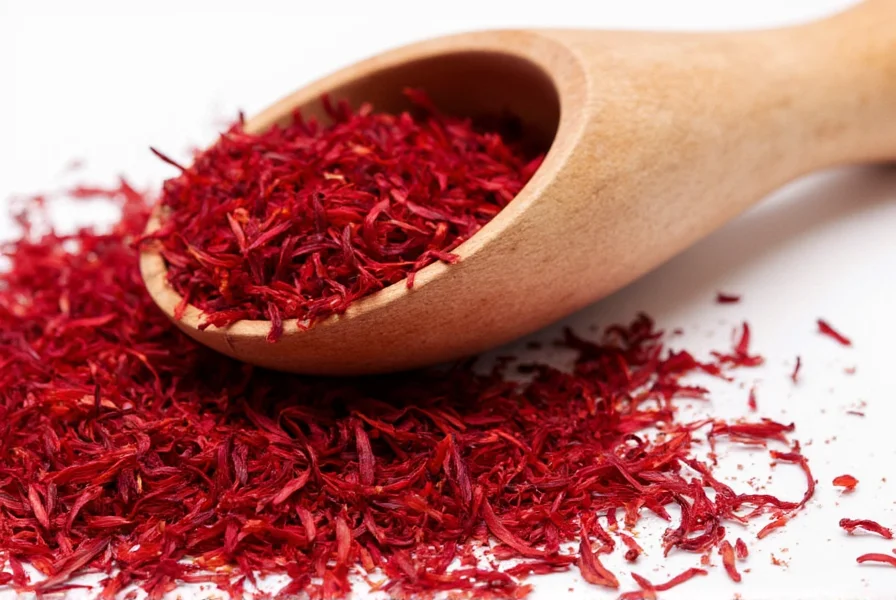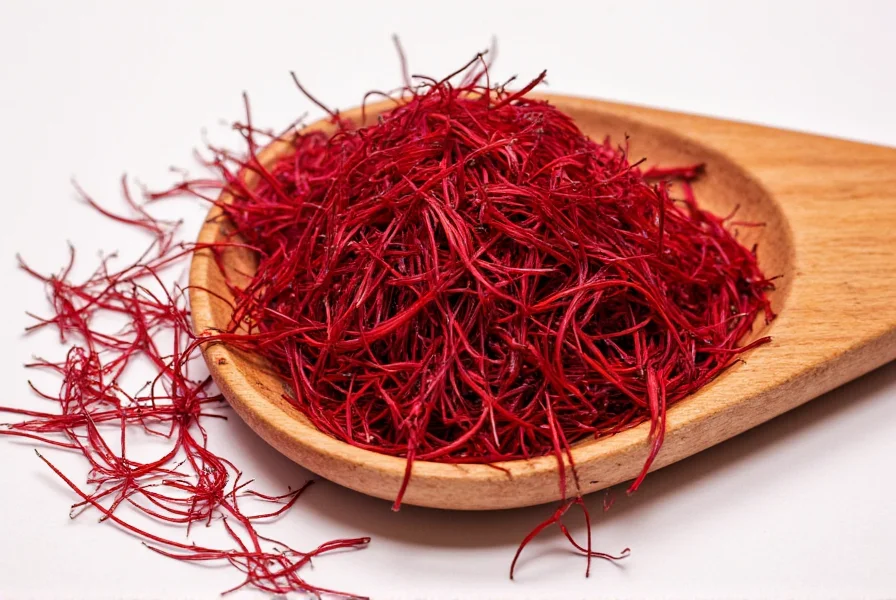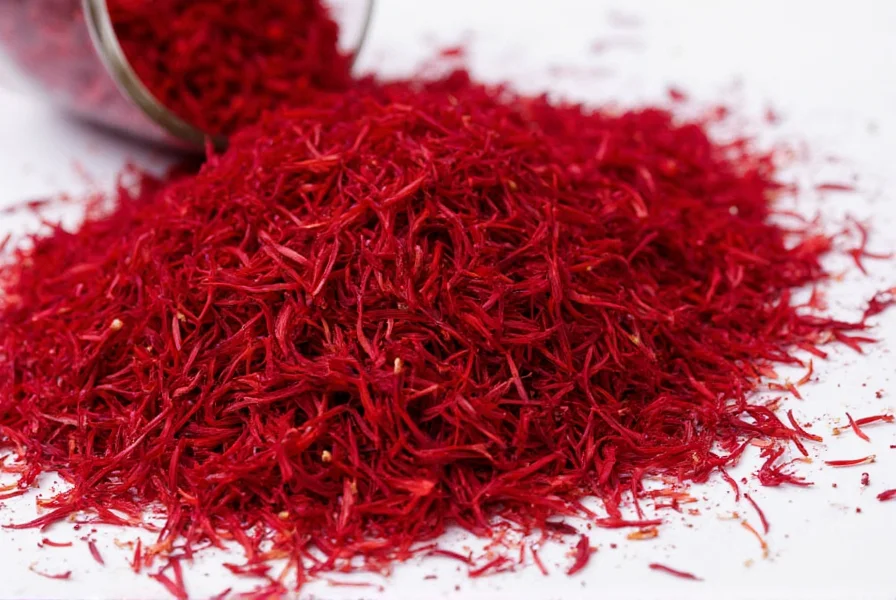Saffron contains potent antioxidants like crocin and safranal that show promising health benefits according to scientific research. Clinical studies indicate saffron may help improve mood in mild-to-moderate depression, support eye health, reduce PMS symptoms, and provide anti-inflammatory effects. The effective daily dosage used in most studies ranges from 20-50mg, though culinary use in traditional cooking provides smaller amounts. While generally safe, excessive consumption can cause side effects, and it should be used cautiously with certain medications.
For centuries, saffron has been prized not only as a culinary spice but also for its potential therapeutic properties. This golden-red spice, derived from the Crocus sativus flower stigma, ranks among the world's most expensive spices by weight. Modern research is now validating many traditional uses while uncovering new potential health applications. Understanding what science actually says about saffron's health effects requires examining the evidence behind popular claims.
Scientific Evidence Behind Saffron's Health Benefits
Multiple clinical trials and systematic reviews have investigated saffron's effects on various health conditions. Unlike many herbal supplements with limited research, saffron benefits are supported by a growing body of peer-reviewed studies. The key active compounds—crocin, crocetin, and safranal—demonstrate significant biological activity that may contribute to several health-promoting effects.
Mood Enhancement and Depression Support
One of the most well-researched benefits involves mental health. A 2020 meta-analysis published in Phytomedicine reviewed 10 clinical trials involving 782 participants with mild-to-moderate depression. Researchers found saffron supplementation (typically 30mg daily of saffron extract) demonstrated comparable effectiveness to conventional antidepressants like fluoxetine and imipramine, with fewer reported side effects. The mechanism appears related to saffron's ability to modulate serotonin, dopamine, and norepinephrine levels in the brain.
For those exploring natural approaches to mood support, saffron for depression natural remedy has become a significant research focus. However, it's crucial to note that saffron should not replace prescribed treatments for clinical depression without medical supervision.
Eye Health Protection
Age-related macular degeneration (AMD) affects millions worldwide, and saffron shows promise in protecting retinal function. In a double-blind, placebo-controlled trial published in Investigative Ophthalmology & Visual Science, participants taking 20mg of saffron daily demonstrated measurable improvements in retinal function after just three months. Researchers believe saffron's antioxidant properties help protect photoreceptor cells from oxidative damage.
This emerging research on is saffron good for eye health suggests it may be a valuable addition to comprehensive eye care strategies, particularly for those at risk of AMD.
PMS Symptom Relief
For women seeking natural approaches to menstrual discomfort, saffron offers evidence-based relief. A study in Complementary Therapies in Medicine found that women who took 30mg of saffron daily during their menstrual cycle reported significantly reduced physical and emotional PMS symptoms compared to placebo. The research on saffron benefits for women continues to grow, with potential applications for menstrual regulation and menopausal symptoms.
| Health Benefit | Effective Dosage | Research Status | Key Compounds Involved |
|---|---|---|---|
| Mood support | 20-50mg/day extract | Strong clinical evidence | Crocin, safranal |
| Eye health | 20mg/day | Promising early research | Crocetin |
| PMS relief | 30mg/day | Good clinical evidence | Crocin |
| Antioxidant effects | Culinary amounts | Well-established | All major compounds |
Understanding Saffron's Active Components
The saffron antioxidant properties stem primarily from crocin (which gives saffron its distinctive color), crocetin, and safranal (responsible for its aroma). These compounds work synergistically to combat oxidative stress, reduce inflammation, and support cellular health. Unlike many antioxidants that are poorly absorbed, saffron's compounds demonstrate good bioavailability, enhancing their potential therapeutic effects.
When evaluating scientific evidence saffron health benefits, it's important to distinguish between culinary use (typically 0.5-1g per recipe) and therapeutic supplementation. Most clinical studies use standardized extracts providing specific concentrations of active compounds, which differ significantly from culinary applications.

Practical Usage Guidelines
Recommended Dosage
The effective daily dosage depends on your purpose. For how much saffron should I take daily considerations:
- Culinary use: 0.1-0.5g per serving (provides flavor and modest antioxidant benefits)
- Mood support: 20-50mg of standardized extract daily (equivalent to approximately 1-1.5g of dried saffron)
- Eye health: 20mg of standardized extract daily
Exceeding 5g daily may cause adverse effects, and doses above 10g can be toxic. Always consult with a healthcare provider before starting saffron supplementation, especially if you have medical conditions or take medications.
Safety Considerations
While saffron is generally recognized as safe when used appropriately, understanding saffron supplement side effects is crucial. Possible reactions include:
- Dry mouth (most common)
- Anxiety or appetite changes
- Nausea at higher doses
- Allergic reactions in sensitive individuals
Saffron may interact with blood thinners, antidepressants, and blood pressure medications. Pregnant women should avoid medicinal doses as saffron may stimulate uterine contractions. The saffron research studies consistently emphasize that quality matters—adulterated products may not provide expected benefits and could contain contaminants.
Incorporating Saffron Into Your Routine
For those interested in the natural saffron uses in traditional medicine, here are practical approaches:
- Saffron tea: Steep 5-10 threads in hot water for 10 minutes
- Culinary applications: Add to rice dishes, soups, or baked goods
- Supplements: Choose standardized extracts with verified crocin content
When purchasing saffron, look for deep red threads with minimal yellow style (the white part), as this indicates higher quality. Authentic saffron should have a distinct aroma and release color gradually in water—not immediately. Be wary of products that seem unusually cheap, as saffron adulteration is common in the marketplace.

Current Research Limitations
While the evidence for saffron's health benefits is promising, several limitations exist. Many studies have relatively small sample sizes, and long-term safety data is limited. Most research focuses on short-term use (8-12 weeks), so the effects of prolonged supplementation remain less understood. The saffron dosage for mental health that works for some individuals may not be effective for others, highlighting the need for personalized approaches.
Researchers continue investigating saffron's potential applications for cognitive health, metabolic syndrome, and cancer prevention, but these areas require more robust clinical evidence before definitive conclusions can be drawn.
Conclusion
Saffron represents one of the better-researched natural compounds with multiple potential health applications. The scientific evidence supports its use for mood support, eye health, and PMS symptom relief at appropriate dosages. While not a miracle cure, incorporating high-quality saffron through culinary use or evidence-based supplementation can be a valuable component of a holistic health approach. As with any supplement, consult with a healthcare provider to determine if saffron is appropriate for your individual health needs and circumstances.
Frequently Asked Questions
What is the most effective way to consume saffron for health benefits?
For therapeutic benefits, standardized saffron extracts providing 20-50mg daily have shown effectiveness in clinical studies. Culinary use (0.1-0.5g per serving) provides antioxidant benefits but likely insufficient for specific therapeutic effects. Steeping saffron threads in warm water before use enhances extraction of active compounds. Always choose high-quality, authentic saffron to ensure you're getting the beneficial compounds.
How long does it take to notice saffron's health effects?
Research suggests it typically takes 4-8 weeks of consistent daily use to notice mood-related benefits from saffron supplementation. Eye health improvements have been observed in as little as 3 months. Culinary use provides immediate antioxidant benefits but won't produce noticeable therapeutic effects. Individual responses vary based on dosage, quality of saffron, and personal health factors.
Can saffron interact with medications?
Yes, saffron may interact with certain medications. It can potentially enhance the effects of antidepressants (SSRIs, MAOIs), blood thinners, and blood pressure medications. Saffron's serotonin-modulating effects mean it shouldn't be combined with other serotonin-affecting substances without medical supervision. Always consult your healthcare provider before combining saffron with prescription medications.
Is saffron safe for long-term use?
Current research suggests saffron is safe for continuous use up to 12 weeks at therapeutic doses (20-50mg of extract daily). Limited data exists on safety beyond this timeframe. Most studies monitoring long-term use haven't reported significant adverse effects, but comprehensive long-term safety data is still evolving. For ongoing use beyond 3 months, periodic evaluation with a healthcare provider is recommended.











 浙公网安备
33010002000092号
浙公网安备
33010002000092号 浙B2-20120091-4
浙B2-20120091-4